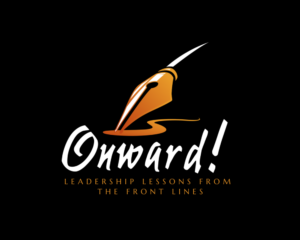Over the past few weeks, I have traveled to various locations across the 10-state footprint our organization serves. I’ve also spoken to several executives at various companies about the state of the agriculture industry and overall economy. All have the same great need – people. Apart from the tech industry dealing with the post-pandemic hangover, one of the key limitations to growth these days is finding people to help meet the demand. How many flights have been cancelled from lack of crews? How many days have we spent collectively waiting in line for service because there isn’t enough help? From truck drivers to salespeople, from warehouse workers to customer service, finding sufficient labor is tricky. This is particularly true in rural and agricultural areas like ours where the population often tilts older and close to retirement age.
Here’s the bad news. Help is not coming. The long-term labor landscape has shifted. Sure, a potential recession may provide some short-term reprieve (something we are all hoping doesn’t happen) but long-term help is going to be harder to find.

Current labor force research and data from the US Chamber of Commerce further proves the shift in workforce dynamics. Currently, there are 2.75 million fewer workers in the workforce than in February of 2020 due to declining labor force participation. In other words, if the same percentage of people were working today as did in February 2020, there would be 2.75 million more people in the workforce.
What has caused the drop and is it going to reverse? I expect the drop is not likely to fully reverse for one major reason – Baby Boomers (born between 1946 and 1964) are retiring and the number of workers replacing them is far fewer than those retiring. Covid accelerated the trend. Now, more than 2 ½ years later, some in the labor workforce are returning but a large chunk are not. Making matters worse, the overall population has declined in rural America (see Chart 1) depicting large swaths of counties in our footprint with population declines of greater than 5% and 10% between 2010 and 2020. Indeed, the last decade was the first decade where the net rural population in the U.S. declined (as opposed to as a percentage of overall U.S. population, which it has been doing for the last 200 years)
Chart 1: Population Decline by County – 2010 to 2020

In summary, this drop in population combined with fewer returning to the workforce post-Covid, our ability to source talent is challenged and help is not on the way. Indeed, our ability to solve the people problem will be the difference maker between companies that are successful and companies that struggle going forward in our space.
How do we continue to meet the needs of our customers and continue to grow if we can’t find the people?
1. Retention. The most important thing a leader can do is retain their current workforce. It begins with leadership as people don’t leave companies, they leave bad bosses. Focused leadership training across an organization supports development and improvement because if the leader gets better, everyone wins. It is also important to assess where your employees are and their direct feedback. You can’t improve what you can’t measure, and it’s important to focus on the right stuff. Pay also matters. Study after study shows the same thing – if overall pay (salary + bonus + benefits) is “fair” most of us are fine. “Fair” is best defined as being paid relatively equally to those doing similar jobs both internally and externally.
2. Recruiting. The next step is to strengthen recruiting. If you’re doing #1 well, you’ll likely have an easier time recruiting, as word of mouth and reputation are the most critical parts of recruiting. Investment in a strong HR team facilitates improved both recruiting and retention. Developing relationships across industry-focused areas such as universities and educational partners broaden recruiting opportunities and the talent pool.
3. Training and Developing. If you can’t find them, build them. The agricultural industry is changing rapidly and the demands for what people can do are changing. Instead of simply firing those with the wrong skills and hiring new people with the right ones, it’s critical to focus on retraining and reskilling people. Of course, this is a two-way street; people need to focus on constantly evolving their skills to keep up with the changing job requirements.
4. Flexibility. On the heels of Covid and shifts in the workforce, another opportunity is to keep senior employees on board longer. But doing this with an aging workforce requires flexibility and creativity. Maybe they only want part-time work or seasonal work. Maybe there are certain jobs they are no longer physically able to do. We need to meet our employees where they are when they are. Flexibility encourages our teammates to want and come to work every day.
5. Efficiency. The greatest opportunity from both a service and profitability piece is to focus on efficiency and operational excellence. At its heart, operational excellence is about doing the same amount of work faster, better, and with less effort. A key to this is to focus on exactly what the customer wants and to eliminate anything being done that doesn’t add to that. In continuous improvement speak, this means eliminating waste — wasting time through inefficient processes (or no processes), redoing work, wasted movement, wasted production, inefficient transportation, the list goes on. If we can cut down on the amount of waste and focus on what actually adds value to the customer, we can dramatically improve customer and employee satisfaction while revolutionizing productivity. The key to this is that the people who know where the opportunities lie are the ones doing the work.
CAUTION! Worrying about not having enough people can lead to two significant problems. The first is that we’re afraid to make changes if a person on our team isn’t a good fit or isn’t pulling their weight. I can’t tell you how many times I’ve heard something akin to “Better than nothing” as an excuse to keep a bad fit in place. This is a huge issue and the wrong answer. As we have to do more with less, it is even more important to make sure everyone on the team is a good fit and pulling their weight. Nothing kills morale faster than a leader allowing a bad apple to sit among the group. As one of my mentor likes to say, “The village knows.” Thus, if someone is not a good fit or needs to up their game, the leader needs to take action. We will find new people and that person will find a better fit. But we can’t if we don’t act and hold people accountable.
The second challenge is that we become afraid to make organizational changes for fear of upsetting people or creating a talent mismatch. Like “Better than nothing”, this creates more problems over the long-term. Virtually every industry is changing quickly. As Henry Ford once said, “If the pace of change inside an organization is slower than the rate of change outside, the end is near.” The key to adapting to change is when making the change, is to help those in our organizations adapt to those changes, whether it be new skills or a new way of thinking. Sitting still out of fear of short-term pain only ensures more long-term pain.
The bottom line is this – our economy and our industry face a challenge. If we can tackle the challenge better than our competitors, we win. If we can learn to retain our existing talent through strong leadership, training, and flexibility, if we can bring in new talent by being a place people want to work, and if we can get more efficient by eliminating practices that waste people’s time and effort on things that don’t add value to our customers, we’ll succeed. We’ll grow despite being talent constrained. Our customers will win because they’ll get improved service. And our employees will win because we can pay more for more value-added work. It will be difficult and will require everyone throughout the organization, but it’s doable.
Onward!
Jeff





